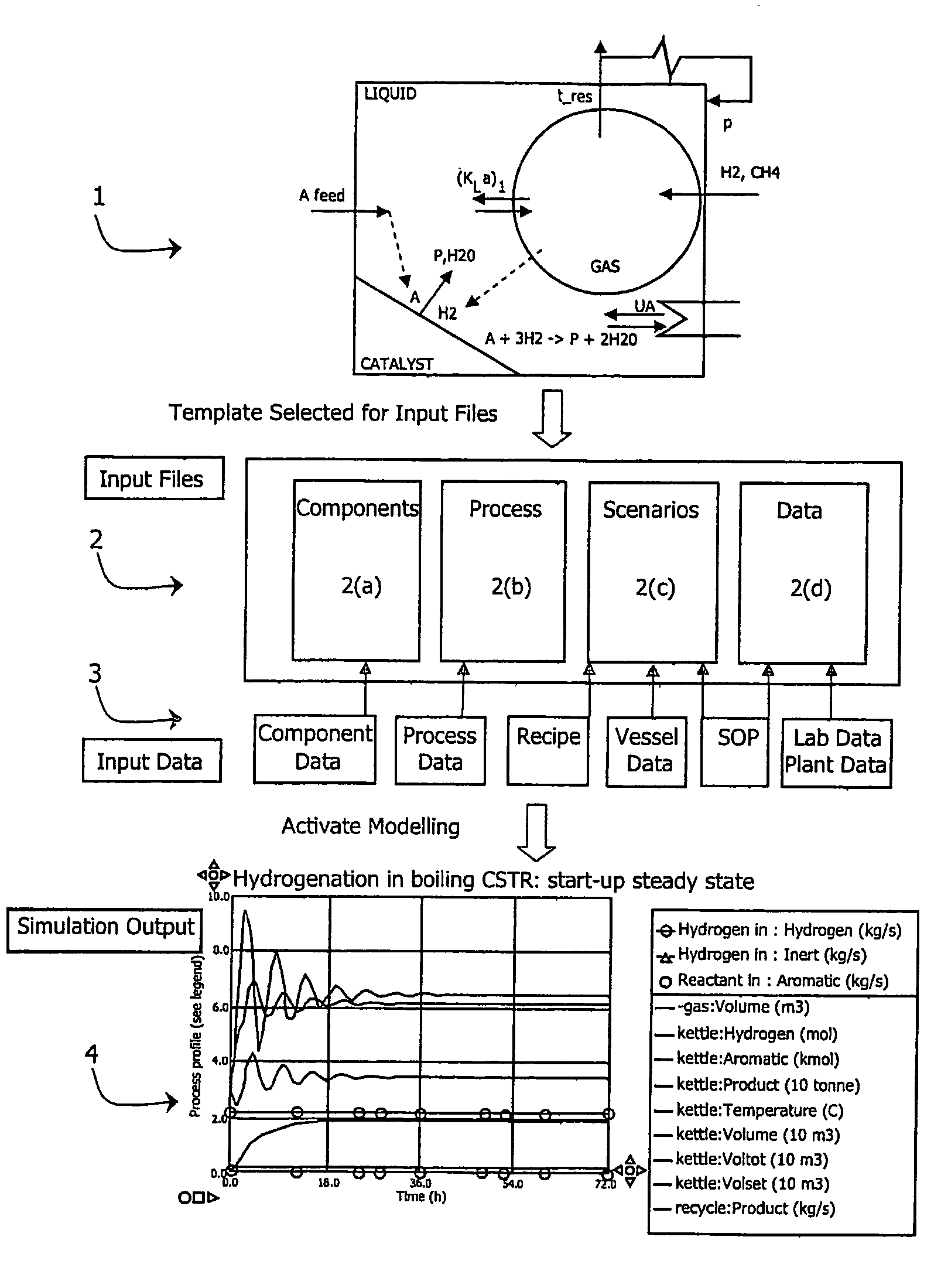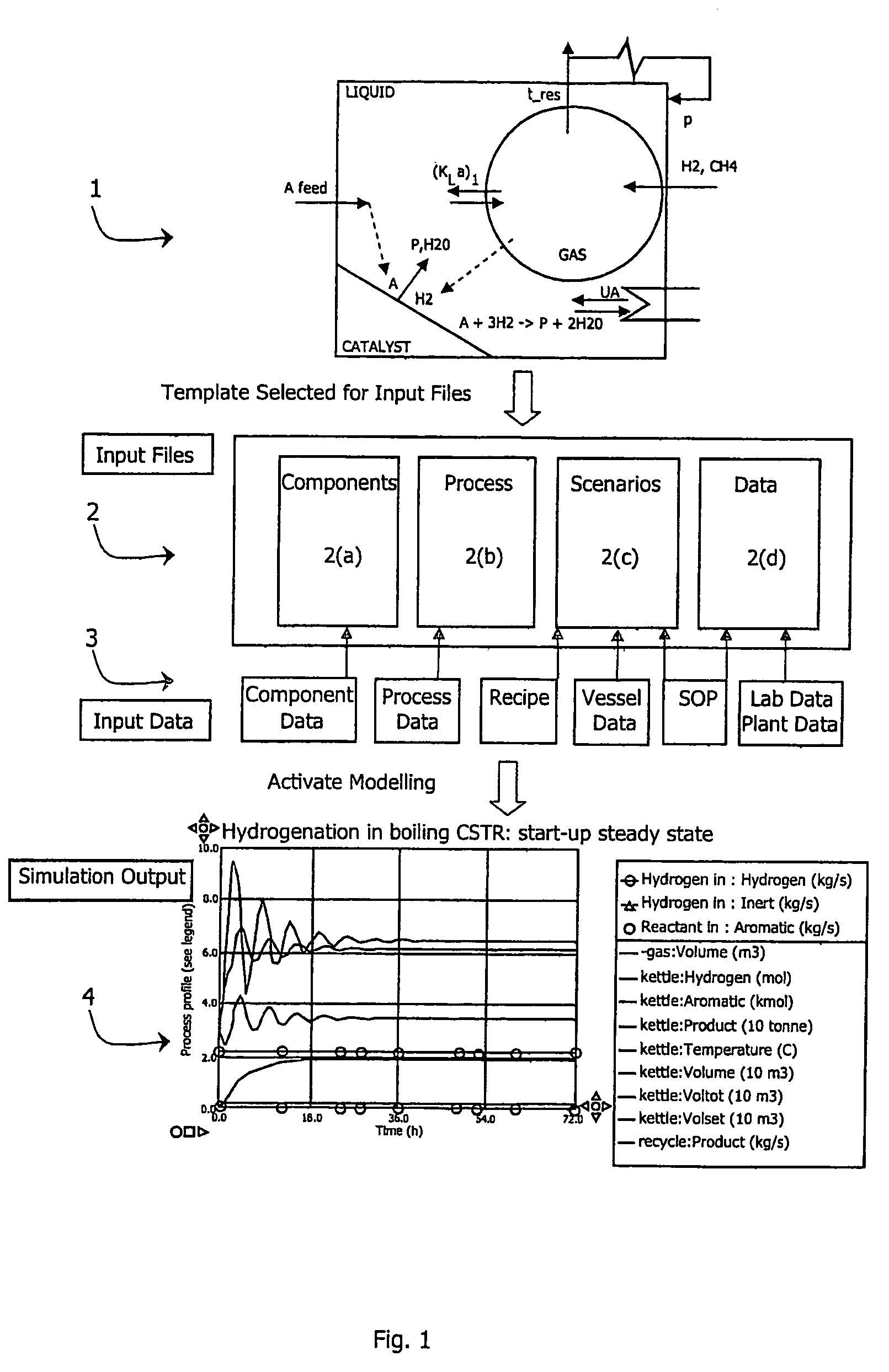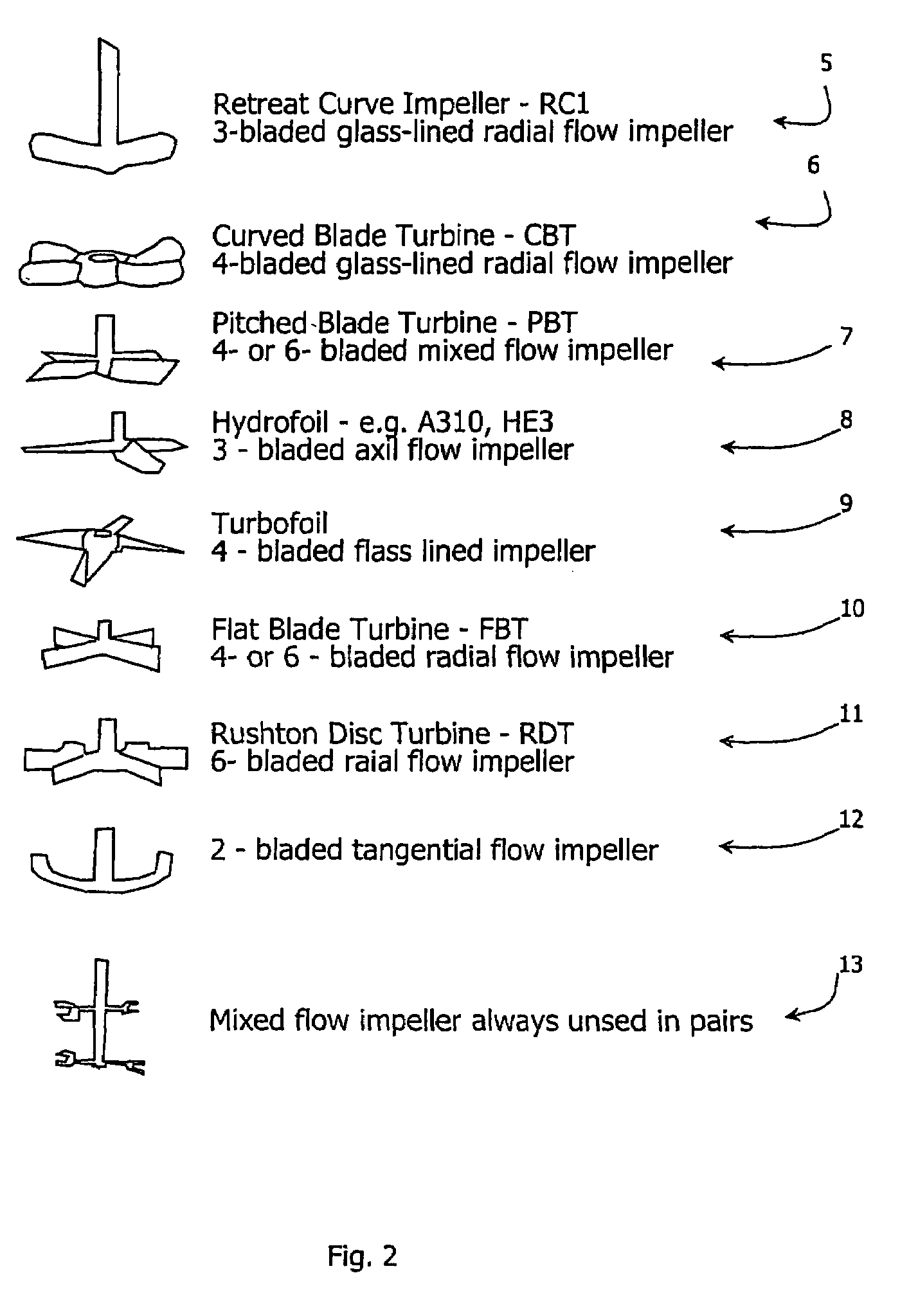Physiocochemical process modelling system
a process modelling and physiocochemical technology, applied in the field of physiocochemical process modelling system, can solve the problems of laboratory experiments by their very nature limited to the small scale, complex physical processes, and significant differences
- Summary
- Abstract
- Description
- Claims
- Application Information
AI Technical Summary
Benefits of technology
Problems solved by technology
Method used
Image
Examples
Embodiment Construction
Brief Description of the Drawings
[0041]The invention will be more clearly understood from the following description of some embodiments thereof, given by way of example only with reference to the accompanying drawings in which:
[0042]FIG. 1 is a diagram showing at a high level operation of a modelling system of the invention;
[0043]FIG. 2 is a set of diagrams of process equipment internals, the operation of which are modelled for example by the system;
[0044]FIG. 3 is a set of diagrams of process equipment externals, the operation of which are modelled for example by the system;
[0045]FIG. 4 is a flow diagram of operation of the system in more detail;
[0046]FIG. 5 is a diagram illustrating structure of a model library of the system;
[0047]FIG. 6 is a sample hierarchical tree display based on a process scheme search and an example leaf node for a model from the library;
[0048]FIG. 7 is a sample components sheet of a model from Example 1;
[0049]FIG. 8 is a set of natural language statements t...
PUM
 Login to View More
Login to View More Abstract
Description
Claims
Application Information
 Login to View More
Login to View More - R&D
- Intellectual Property
- Life Sciences
- Materials
- Tech Scout
- Unparalleled Data Quality
- Higher Quality Content
- 60% Fewer Hallucinations
Browse by: Latest US Patents, China's latest patents, Technical Efficacy Thesaurus, Application Domain, Technology Topic, Popular Technical Reports.
© 2025 PatSnap. All rights reserved.Legal|Privacy policy|Modern Slavery Act Transparency Statement|Sitemap|About US| Contact US: help@patsnap.com



